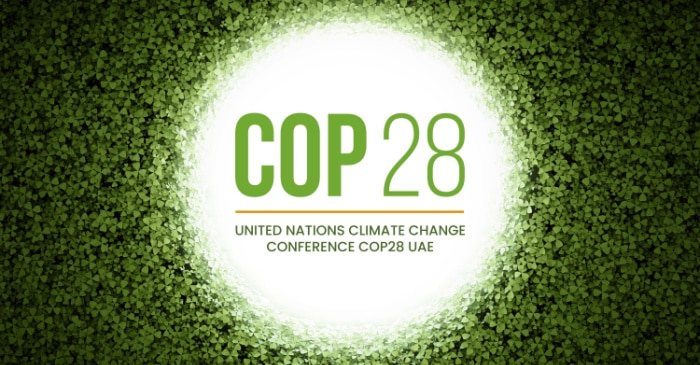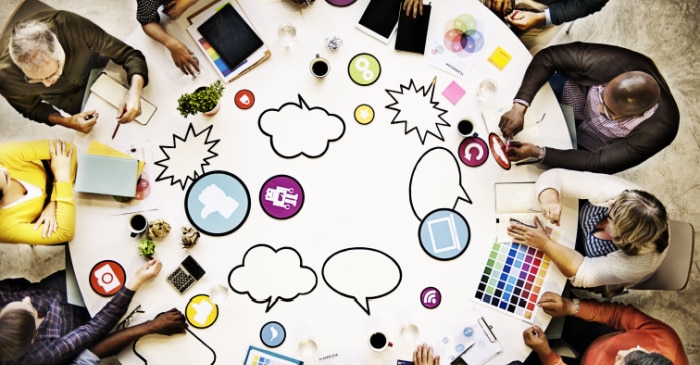
Genome Sequencing and Personalised Medicine

The Half-Way Mark: What Can We Expect from COP28?
DEI & Communications: Language Matters
November 2023

by Stephanie Batot, a Director of Sandpiper based in Singapore. Stephanie has extensive experience delivering impact through communications for global corporations. Her areas of expertise include strategic communications, content and campaigns, NGO communication, community impact, diversity, equity and inclusion, employer branding, employee engagement, research & insights, financial services, travel and tourism, food and beverage.
Language is dynamic and constantly evolving. It changes over time with technological advancements, general vocabulary expansion, linguistic ‘borrowing’ and changes in social norms and values. Also, as society becomes more aware of issues related to gender, diversity, equity and inclusion (DEI), there is a growing effort to use more inclusive language.
With both language and DEI in constant evolution, it’s easy to inadvertently use some words that will sound misplaced to our audiences.
Whilst perfection is not the goal (DEI is a journey!), our progress towards using more inclusive language is key. Inclusivity affects companies’ brand reputation and bottom line. As the ‘social’ aspect of Environment, Social and Corporate Governance (ESG) criteria gains prominence, the way in which businesses conduct and portray themselves is increasingly scrutinised through this lens by customers, investors, media, activists, and employees.
The first corporate inclusive language guides date back to 2010 and since then, many companies have chosen to develop them for their teams – Apple, Google, LinkedIn, Microsoft, NASAA, Standard Chartered – to mention a few. In various contexts, inclusive language guides are employed to encourage a more equitable and welcoming discourse, whether in written communication, public speaking, or everyday conversations. Such guides typically offer insights into preferred terminology to create an environment that fosters inclusivity and understanding.
What is in a word?
Everything. As communicators, our choices in language empower us to reframe issues, challenge problematic ideas and foster visions of equality.
Language has the power to shape thoughts and perceptions, influencing the way people view the world. It has the power to mobilise and inspire, driving social and political change.
- Readability – our first inclusivity check should be readability. If we are using words that do not connect with the intended recipient, our message(s) will miss the mark.
- Tone – once the piece has ticked the readability box, the next check is whether it has stricken the right tone and, if it relates to people: is it really inclusive? Does it steer away from sweeping statements which categorise people or communities according to characteristics defined by others? Instead, we strive to be led by how the people in question prefer to be referred to. When in doubt, we try and ask, checking directly with these groups.
Below are three top tips to guide your journey towards inclusive language. Embedding these practices into an organisation’s communications can prevent clients, investors, or employees from feeling excluded.
Inclusion requires extra effort
With the fast-paced changes in our society and our grasp of language continually changing, it is true that words, phrases, or references that were once acceptable a decade ago may now be considered inappropriate.
Promoting diversity in culture and language demands additional dedication, and it is natural to encounter errors as we strive to do it correctly. The objective is to minimise these errors and identify as many as we can before they cause harm to individuals or your brand’s reputation. When mistakes do occur, we should use them as learning opportunities and establish sufficient procedures to avoid repeating the same errors in the future.
The guidelines and examples presented in the three key areas below are designed to encourage thoughtful consideration when looking to finesse your choice of language for more inclusive communications. We also provide specific examples, so marketers can assess their understanding and walk away with a few clear, practical, and actionable tips for using inclusive language.
Able-ism
‘Able-ism’ terms are redefined to ensure we are putting people first.
In my first week in the DEI team of a large international bank, one of my communications colleagues was visually impaired. He quickly taught me able-ism. If you have a disability, it is something you have, not something that defines you. Words matter and his preference was to be described as ‘a person living with a visual disability’, rather than ‘blind’.
Simply put, it is about focusing on people, not their ability/disability.
So instead of using terms such as ‘crippled’ or ‘handicapped’ we will choose terms such as: a person with intellectual disabilities, a person living with mental health issues or a wheelchair user.
We avoid: ‘is afflicted with’, ‘suffers from’, ‘is a victim of’. We will say ‘people with a visual impairment’ or ‘blind people’, not ‘the blind’.
| Do’s |
|---|
| a person with intellectual disabilities |
| a person living with mental health issues |
| a wheelchair user |
| people with a visual impairment |
| blind people |
| Don’ts |
|---|
| crippled |
| handicapped |
| is afflicted with |
| suffers from |
| the blind |
Identity and social dynamics
There have been huge changes when it comes to race, culture and ethnicity, where terms that have recently been used in every day conversations are no longer acceptable. And as change is still taking place, at pace, we continue to come across, even sometimes in some official communications, terms that are problematic, for example:
‘Blacklist’ refers to a list of things that are seen negatively, juxtaposed against ‘whitelist’, a list of things that are seen positively. There is now a set of new names for ‘blacklist’ alternatives such as blocklist, denylist, reject list, drop list and exclude list. Looking at alternative terms for whitelist, we have seen the following: allowlist, safelist, accept list, welcome List, to name a few.
‘Mixed race’ implies there is a ‘pure race’. What we mean is bi-racial or multi-racial.
Third world, developing countries: We prefer referring to ‘global south and global north’ or high-middle-low-income countries.
‘Poor people’ or ‘the poor’: We should refer instead to ‘people living in poverty’.
| Do’s |
|---|
| blocklist, denylist, drop list, exclude list |
| allowlist, safelist, accept list, welcome list |
| bi-racial, multi-racial |
| global south |
| people living in poverty |
| Don’ts |
|---|
| blacklist |
| whitelist |
| mixed race |
| third world, developing countries |
| poor people, the poor |
Gender neutrality
Check for stereotypes. As you will sense from the examples below, some are deeply ingrained and pervasive in language!
We avoid ‘mankind’, which has an inherent association with maleness, and replace it with terms such as ‘human beings’, ‘humankind’.
Similarly, the term ‘spokesman’ is outdated, and we now use ‘spokesperson’.
Again, we would no longer use ‘manpower’ and choose the word ‘workforce’ instead.
| Do’s |
|---|
| human beings, humankind |
| spokesperson |
| workforce |
| Don’ts |
|---|
| mankind |
| spokesman |
| manpower |
Last words
Inclusive language guidelines are designed to prompt thought when using language. They are not set rules and should not be viewed as restrictions. They are intended to complement existing messaging frameworks and positionings. Language is context- and audience-specific, and it shifts between time and place. You will never be able to represent absolutely everybody, and if your organisation spans across dozens of markets, writing from one cultural viewpoint means there will always be some level of implicit bias.
When reviewing or developing a people-related piece of communications, whilst keeping in mind some of the above, you will figure out what works best for your purpose. It can be overwhelming and intimidating to communicate with people if you are worried you might be offending someone with the language you use. By educating yourself, asking questions and engaging in conversations, you are on the right track to be an inclusive communicator. And just remember: if unsure, it is okay to ask. Contact us to learn more.



